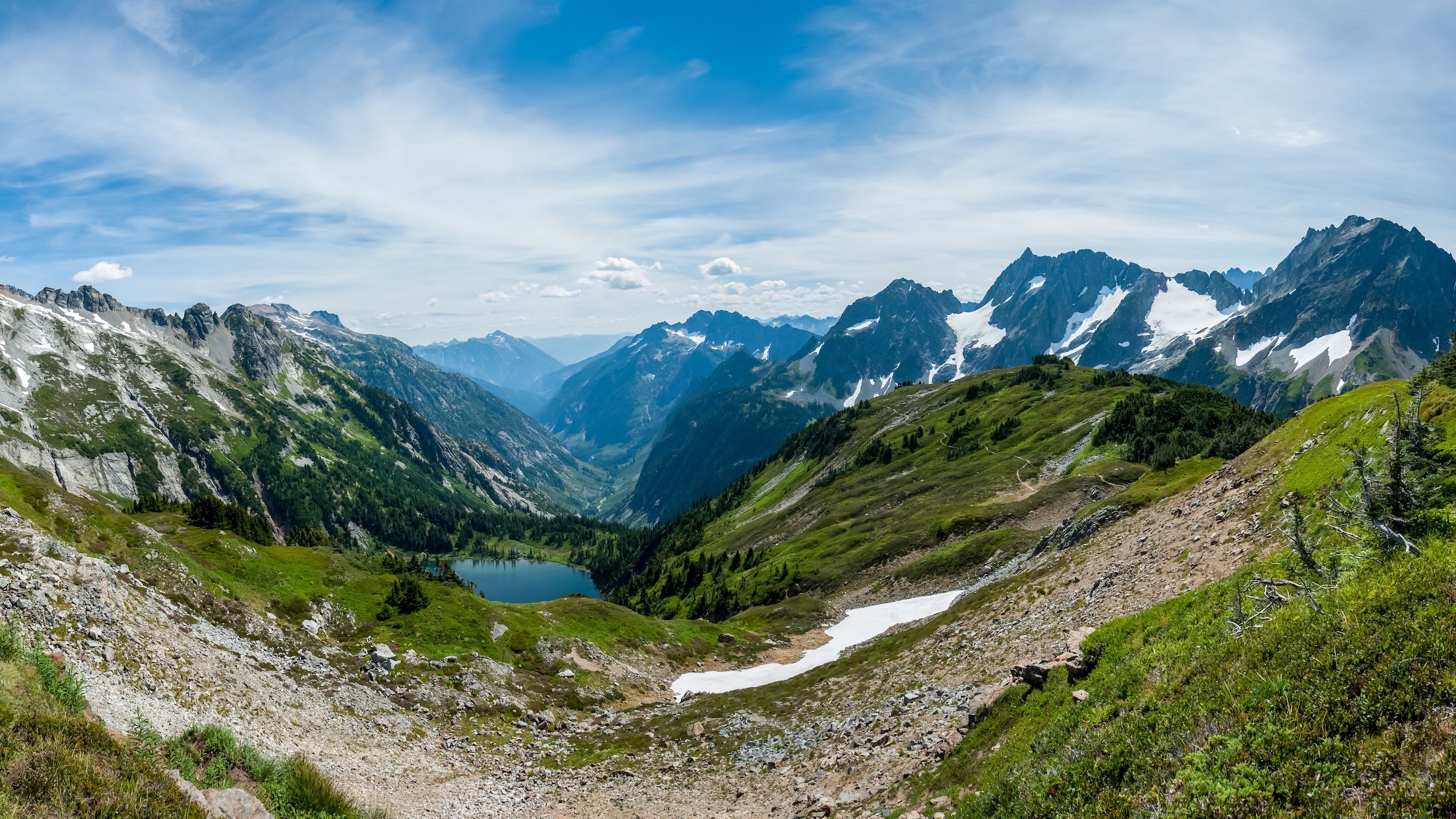
Road trips. Camping adventures. National parks reopening. A once-cloudy summer travel forecast is starting to brighten. And while some of the most popular national parks—like, Yellowstone National Park, spanning Montana, Idaho, and Wyoming; Great Smoky Mountains National Park in North Carolina and Tennessee; and Grand Canyon National Park in Arizona—will likely see a post-lockdown rebound in visitors this summer, there are many lesser-known national parks to explore if you want to stay off the beaten path.
Ready to find your happy place in wide open spaces? Here are 10 under-the-radar national parks reopening in the U.S. this summer.
Gates of the Arctic National Park and Preserve, Alaska
In contrast to Great Smoky Mountains National Park, the most-visited national park in 2019 with over 12.5 million visitors, Alaska’s Gates of the Arctic National Park and Preserve saw just 10,518 visitors in the same year—making it the least visited and most remote national park on this list. The virtually untouched terrain—dubbed Alaska’s ultimate wilderness—contains no roads, trails, or designated campsites. Instead, visitors are welcome to wander freely across the 8.4 million acres of land to fish, camp, backpack, kayak, and more.
Pinnacles National Park, California

California has nine national parks (the most in the U.S.), so residents are spoiled for choice. Of those nine, Pinnacles National Park was the least visited in 2019; the park also ranked 50th for annual visitors out of the country’s 62 national parks.
Pinnacles National Park is located in Central California; just five miles from Soledad or a road trip of 80 miles from San Jose. As part of the park’s phased reopening, visitors can explore its many hiking trails and caves by day, as well as camp and stargaze by night.
Tip: Remember to forward your campground reservations and other travel plans to TripIt. Doing so will allow you to check out nearby places ahead of time, so you know where to find local amenities, such as convenience stores and restaurants.
North Cascades National Park, Washington
Mountains, glaciers, and lakes. Oh my! Just three hours outside Seattle, North Cascades National Park is an ideal place for hiking, fishing, and camping. Home to grizzly bears, gray wolves, more than 200 bird species—and just 38,200 human visitors in 2019—this national park has plenty of room for outdoor adventures at a safe, social distance.
Dry Tortugas National Park, Florida

Accessible only by boat or seaplane, Dry Tortugas National Park is 100-square miles of mostly open water and seven small islands. Located about 70 miles west of Key West, this national park is best known for its coral reefs as well as its marine and bird life. Camping, ferry boats, and seaplane tours have all resumed, however guided tours are still unavailable at this time.
Great Basin National Park, Nevada
Located in Nevada’s Great Basin Desert, Great Basin National Park offers picturesque views of Wheeler Peak, as well as the surrounding South Snake Mountains. Visitors can also explore Lehman Caves with its distinctive stalactites and other rock formations. If you’re planning to camp in the park overnight, be mindful that some campgrounds remain closed, while others have reopened. Check the park’s dedicated public health page for all visitor-related updates.
Congaree National Park, South Carolina

This summer, head to Congaree National Park for canoeing, hiking, fishing, camping, and more. At the time of publication, the park re-opened its backcountry, which includes two canoe launches as well as several trails for day-use access (sunrise to sunset). Increased recreational access to the park will continue in phases, under the guidance of health authorities.
Voyageurs National Park, Minnesota
If exploring a national park by water is your idea of outdoor fun, make plans to visit Minnesota’s Voyageurs National Park. You can navigate the park’s interconnected system of waterways with your own watercraft or rent one from a local business. Ranger-led tours, though, have been suspended for the 2020 season.
Black Canyon of the Gunnison National Park, Colorado
Hiking, rock climbing, kayaking, fishing, camping, and night sky viewing are just some of the activities available at Black Canyon of the Gunnison National Park. Of Colorado’s four national parks, Black Canyon of the Gunnison is the least frequented, with just under 433,000 annual visitors in 2019—a drastic dip from Rocky Mountain National Park’s 4.6 million visitors.
If you plan to stay the night and camp, reservations are recommended. Wilderness permits are also required in some areas of the park. Though visitor centers are closed due to COVID-19, park rangers are available on-site for issuing permits to visitors.
Big Bend National Park, Texas

In Far West Texas, Big Bend National Park is the place to go for scenic drives and day hikes. Currently, Big Bend National Park is open for day use, with select frontcountry hiking trails open for desert exploration. Rio Grande river access points are also open for day-use kayaking and canoeing. You can stay up-to-date on the park’s phased reopening, including campgrounds, here.
Wind Cave National Park, South Dakota
One of America’s oldest national parks, Wind Cave National Park offers vast rolling prairie grasslands and forested hillsides for visitors to explore. Navigate its hiking trails; discover its wildlife, including bison, elk, prairie dogs, and pronghorn antelope; or drive its scenic roads and enjoy picturesque views.
While the cave and campground are currently closed due to COVID-19, the park plans a phased reopening. Be sure to check their website for updates as you plan your visit.

